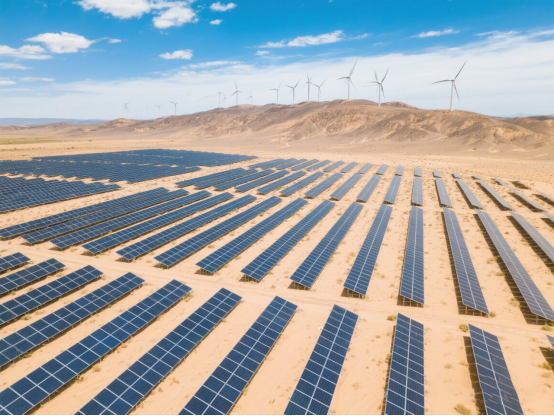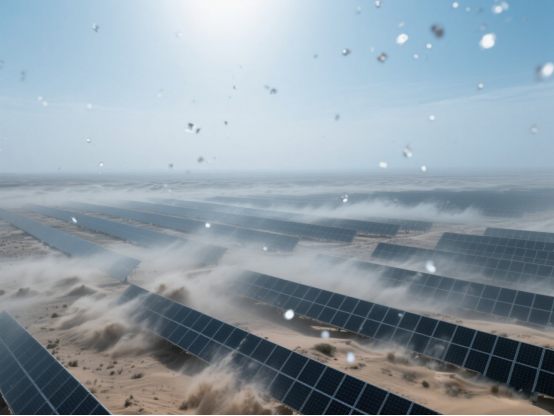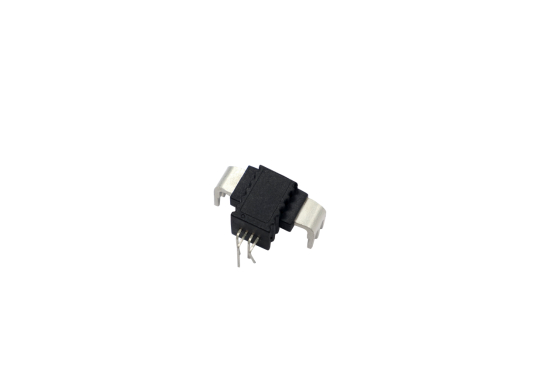
In the vast Desert, rows of photovoltaic panels are forests of steel, turning scorching sunlight into clean electricity. This is the ambition of China's new energy strategy, and it is also the main battlefield for the construction of large-scale wind power photovoltaic bases in the country's "sand desert". However, this land full of hope is also accompanied by harsh natural tests: flying dust storms, sudden hail, and huge temperature differences between day and night... These extreme weather are posing unprecedented challenges to the "nervous system" of photovoltaic power plants - all kinds of precision sensors. How to ensure that in such a harsh environment, the power station can still operate stably and continue to output green electricity? This is not only a technical issue, but also the key to energy security and operation and maintenance costs.

(1) The double challenge of sandstorm and hail
The construction of "Shage famine" base is an important measure for the country to achieve the goal of "double carbon". These bases are often located in remote, harsh environments, and in extreme weather conditions such as sandstorms and hail, the reliability of the equipment is extremely high requirements. In particular, as the "eyes" and "ears" of the photovoltaic system, the current and voltage sensors monitor the flow and status of electric energy in real time at key nodes such as the bus box, inverter, and MPPT (maximum power point tracking). Once the sensor "fails" due to dust erosion, temperature difference failure or electromagnetic interference, the light will affect the power generation efficiency, and the heavy may lead to system failure or even safety accidents. Frequent maintenance and replacement are not only costly, but also become a huge burden for operation and maintenance personnel on the vast Gobi Desert.

(2) CHIPSENE solutions: AN3V series sensors
In the face of "baking" tests in harsh environments such as "Shage famine", CHIPSENSE AN3V series Hall sensors, with their hardcore design, have become a "reassurance" for photovoltaic power plants. We may wish to take the photovoltaic power station operating in the harsh environment of the plateau as an example to see how AN3V "broke through" :
No fear of temperature difference "cold and hot face":in the desert Gobi region, the temperature difference between day and night is great. The AN3V series sensors have a wide operating temperature range (-40°C to +105°C), whether it is hot or cold, can maintain stable performance output, ensure the accuracy of monitoring data, effectively avoid drift or failure due to temperature changes. Its excellent temperature drift control (such as zero output voltage temperature drift typical value as low as 0.4mV, gain temperature drift control within ±1.6%), but also provides a guarantee for long-term stable operation.

"Golden Bell Shield" against "wind, sand and hydropower" intrusion:Although the AN3V series is a built-in component that needs to be installed in the equipment to meet the requirements, but its own design has been taken into account the harsh industrial environment. The product is made of flame retardant material in line with UL94-V0 standard and has certain basic protection capability.More importantly, its high insulation characteristics (such as 4.3kV power frequency voltage, 8kV transient voltage) and excellent electrical gap/creepage distance (> 8mm), which not only ensures electrical safety, but also effectively improves the ability to resist the influence of moisture, dust attachment and other factors, reducing the risk of short circuit or performance degradation caused by environmental factors.
The "critical" in the "electromagnetic fog" : photovoltaic power station, inverters and other power electronic equipment will produce complex electromagnetic environment. The AN3V series is based on the Hall principle, the primary secondary side is highly insulated, and this design itself has a good anti-interference basis.The stability of the signal output and high precision (typical accuracy + / - 1% @ IPN), ensure that under the strong electromagnetic interference, can accurately capture the current signal, avoid misjudgment, for system provides the reliable basis for high efficient and safe operation.
(3) Help the construction of "Shage famine" base, reduce costs and increase efficiency
In such an environment, the reliability of equipment is directly related to operation and maintenance costs and return on investment. These "hardcore" features of CHIPSENSE AN3V series sensors mean that:
●Longer stable uptime: reduced downtime losses due to sensor failures.
●Lower maintenance frequency: For remote power stations, reducing one on-site maintenance means saving a lot of manpower, material resources and time costs.
●Higher system safety: Accurate and reliable monitoring is the basis for preventive maintenance and rapid response to failures.
It can be said that the selection of high-reliability sensors such as the AN3V series is an investment in the long-term value of photovoltaic power stations, but also a strong support for the national new energy strategy.
(4) Guardian photovoltaic system, core sen electronics in action
From the Gobi filled with yellow sand to the plateau attacked by hail, extreme weather is an unavoidable challenge in the development of the photovoltaic industry. CHIPSENSE as a deep pioneer in the field of current and voltage sensing, has always been committed to using technological innovation to create more reliable and tough "Sentinels" for photovoltaic systems. The stable performance of AN3V series sensors in harsh environments is the fulfillment of our commitment to "protecting green electricity and reducing costs". In the future, CHIPSENSE will continue to follow the pace of national energy development, provide trusted sensing solutions for more new energy projects, including the "Shage Desert" base, and jointly protect this promising land of green energy.
CHIPSENSE is a national high-tech enterprise that focuses on the research and development, production, and application of high-end current and voltage sensors, as well as forward research on sensor chips and cutting-edge sensor technologies. CHIPSENSE is committed to providing customers with independently developed sensors, as well as diversified customized products and solutions.
“CHIPSENSE, sensing a better world!
www.chipsense.net
4F, Building C, ZHENGLING.Hi-TECH PARK(Core Space) , No. 2 Cuizhu 2nd Street, Xiangzhou District, Zhuhai, Guangdong Province, China
+86-756-8600806